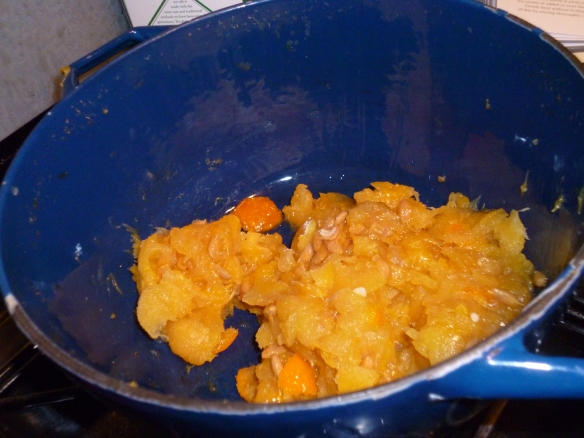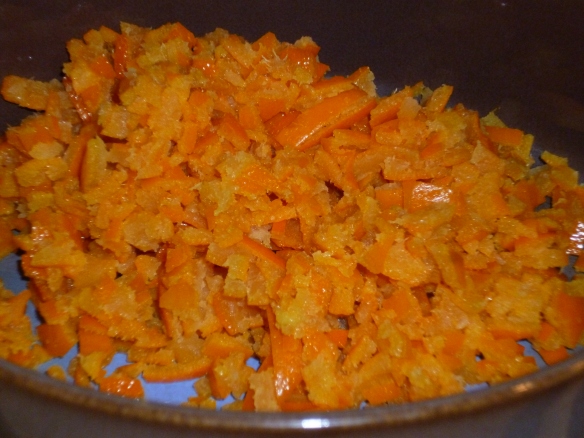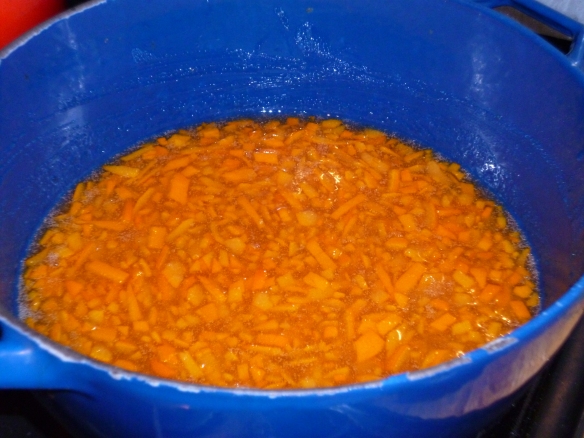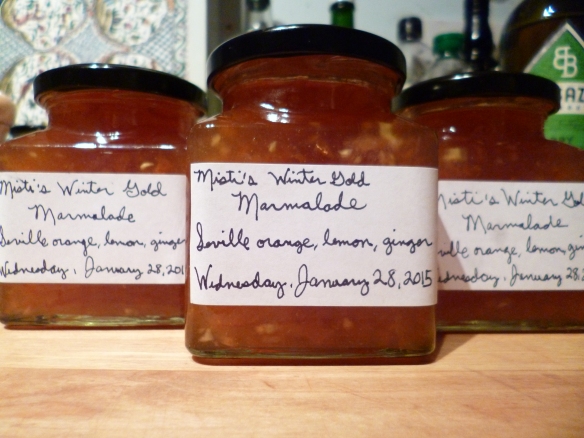
Until a few years ago, I had never eaten a hot cross bun. They weren’t an Easter tradition where I come from and to be honest, I generally loathe dried fruit in baked goods. If you ask me, sultanas are the ruin of a quality scone. Which is why I was surprised the first time I tried a hot cross bun and immediately wanted another.
The exact history of the hot cross bun is not known. Some people say a monk in the 12th century baked the buns and incised them with a cross in honor of Good Friday. Others say it was a monk in the 14th century in St. Albans. During the the reign of Queen Elizabeth I, a law was passed that restricted the sale of sweet buns to funerals, Christmas, and Good Friday. Thank heavens that isn’t the law now.
For my recipe, I chop the dried fruit before putting it into the dough. I feel that this helps people like me who have a fear of fruited baked goods. I also add a tart apple to balance the sweetness and stem ginger for a bit of warmth.
Per my friend Rachel’s request, here is my recipe. The quantity of dried fruit I’ve given suits my tastes but you should absolutely tailor it to suit yours. I hope you enjoy them like I do. For breakfast, for elevenses, for tea. . .
Ingredients:
For the buns
300 ml + 2 tbsp full fat milk
50 g unsalted butter
1 tsp cinnamon
1/4 tsp allspice
a few dustings of nutmeg
500 g strong white bread flour (plus up to 250 g extra for kneading)
1 tsp salt
75 g caster sugar
7 g fast-action yeast
1 egg, beaten
the zest of 1 orange
25 g mixed peel, chopped
30 g dried cherries, chopped
15 g dried cranberries, chopped
10 g raisins, chopped
1 large piece of stem ginger in syrup, minced
1 small tart apple, peeled, cored, and finely chopped (I use a Cox or a Granny Smith)
For the crosses
80 g plain white flour
95 ml water
For the glaze
1 tbsp apricot jam
1 tsp golden syrup
1/2 tsp water
Method:
Put the milk in a small saucepan and heat it on a low flame until bubbles form. Once this happens, turn off the heat and stir in the butter until it’s melted. Allow the mixture to cool a bit. If you can touch it and it doesn’t feel too hot, that’s perfect. Mix in the cinnamon, allspice, and nutmeg.
In a large bowl, whisk together the flour, sugar, salt, and yeast.
Make a well in flour mixture. Pour the spiced milk mixture and crack the egg into it. Stir this with a wooden spoon just until the ingredients come together forming a shaggy sticky dough.
Remove the dough from the bowl and knead it on a lightly floured surface. Add extra flour if it’s too sticky to handle, but keep in mind that too much flour will make dense dough. Knead the dough until is smooth. This takes me about 8 minutes. It might take more or less time for you. Once the dough is properly elastic, put it in a large lightly greased bowl and cover it with cling film. Allow it to rise someplace warm and draught free until it doubles in bulk. This can take 1-2 hours.
When the dough has doubled, add the zest, peel, cherries, cranberries, raisins, apple, and ginger to the bowl. Knead them into the dough until they are well incorporated. Then once again cover it with cling film and allow the dough to rise a second time. Roughly another hour.


After it has raised a second time, tip the dough out of the bowl and divide it dough into 12 pieces. You can be precise and weigh it all like you’re in the Bake Off or you can eyeball it. I do the latter. Roll the pieces into smooth balls on a lightly floured surface.
Line a rectangular glass or earthenware dish with baking paper. Place the buns in it. They should be touching, but make sure there is also enough room for them to expand. Cover them with plastic wrap and allow them to rise one last time.
Preheat the oven to Gas 7/220°C/425°F.
While the oven heats, mix the flour and water to form a thick paste for the crosses. If it’s too thick, add a teaspoon of water. If it’s too runny, add a teaspoon of flour. Once the desired consistency has been achieved, spoon the mixture into a piping bag. Be careful that the paste doesn’t run everywhere. Gently pipe a straight line across a row of buns. I like to start going from left to right. Then do the next row and so on. To finish the crosses, rotate your dish and pipe lines in the other direction so they are perpendicular.

Bake the buns on the middle shelf of your oven for approximately 20 minutes or until golden brown. While they bake, make the glaze by putting the jam, syrup, and water in a small pot and bringing them to a boil. Allow it to thicken a moment before turning off the heat.
After you have removed the buns from the oven, immediately brush them with the glaze then transfer them to a cooling rack.




















